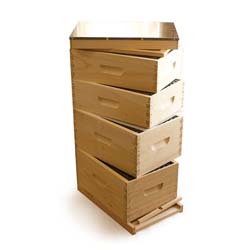Assessing the status of your hives is an essential skill for any beekeeper, particularly with respect to Varroa. Taking a regular mite count is key this. But what options exist when you do discover a dangerously high count? Thankfully, beekeepers today have many options.
Treat the Hive
Depending on the time of year, choose a soft or hard chemical treatment. Keep in mind that the use of any specific treatment is contingent on a number of factors. These include the temperature, where the bees are in the yearly life cycle, the amount of brood in the colony, if honey supers are in use and more. Each manufacturer will provide these details and usage instructions on their packaging or website.
If mite counts are high, not all is lost. As soon as possible, research and implement the treatments that work best with your style of beekeeping. Be vigilant and you may help your bees win the battle against the Varroa infestation.
Continue Bee Husbandry
Beyond the use of treatments, there are general hive management steps that can pay dividends. These include take steps to remove drone brood, the use of essential oils, use screen boards, and ideas such as the “brood-break”.
Protect the Apiary
If it’s clear Varroa mites have fully infested the colony and it’s already in decline, or winter is upon you, you may wish to consider removing the colony from the bee yard or euthanizing it. This is a devastating realization, especially for the new beekeeper. But for the safety of the other colonies and to discontinue the spread of Varroa, this may be one option worth considering in the worst case.
